THE E ATING W ELL DIABETES COOKBOOK
Copyright 2005 by Eating Well, Inc., publisher of
E ATING W ELL , The Magazine of Food & Health
823A Ferry Road, P.O. Box 1010, Charlotte, VT 05445
www.eatingwell.com All rights reserved, including the right to reproduce this book, or any part thereof, in any form, except for the inclusion of brief quotations for review. The Library of Congress has cataloged the hardcover edition as follows: The EatingWell diabetes cookbook: 275 delicious recipes and 100+ tips for simple, everyday carbohydrate control / Joyce Hendley & the editors of EatingWell; foreword by Marion J. Franz. p. cm.
Includes index. ISBN: 978-1-58157-928-4 1. DiabetesDiet therapyRecipes. I. Title: EatingWell diabetes cookbook. II.
Hendley, Joyce, 1960 RC662.E256 2005641.5'6314dc22 2005042003 Editorial Director: James M. Lawrence
Writer & Editor: Joyce Hendley Recipe Editor: Patsy Jamieson Nutrition Consultants: Marion Franz, M.S, R.D, C.D.E; Sylvia Geiger, M.S., R.D.
Production Director: Alice Z. Lawrence Managing Editor: Wendy S. Ruopp
Recipe Analysis & Editorial Support: Alesia Depot
Contributing Editors: The E ATING W ELL Staff Contributing Writer & Editor: Lee Ann Cox
Test Kitchen: Jim Romanoff, Stacy Fraser, Jessica Price, Katie Webster
Research Editor: Anne C. Treadwell Proofreader: David Grist Designer: Susan McClellan Photographer: Ken Burris Published by
The Countryman Press, P.O. W. W.
Norton & Company, Inc., 500 Fifth Avenue, New York, New York 10110
THE E ATING W ELL DIABETES COOKBOOK
275 DELICIOUS RECIPES AND 100+ TIPS FOR SIMPLE, EVERYDAY CARBOHYDRATE CONTROL
J OYCE H ENDLEY & THE E DITORS OF E ATING W ELL
Foreword by Marion J. Franz, M.S., R.D., C.D.E.

THE COUNTRYMAN PRESS WOODSTOCK, VERMONT Dedicated to the memory of Elizabeth Hiser, M.S., R.D.,
Founding Nutrition Editor of E ATING W ELL M AGAZINE ,
and this books guiding light. J.H. Joyce Hendley, M.S. , is E ATING W ELL s nutrition editor and co-author of The Eating Well Diet (2007).
A former food editor at Weight Watchers magazine, she wrote Sarah Fergusons bestselling Win the Weight Game (2000). Joyce also co-wrote Forbidden Foods Diabetic Cooking (2000, with Maggie Powers, R.D.), which won the National Health Information Award (Silver). Marion J. Franz, M.S., R.D., C.D.E. , former director of Nutrition and Health Professional Education at the International Diabetes Center in Minneapolis, Minnesota, is a nutrition/health consultant with Nutrition Concepts by Franz, Inc.
RECIPE GUIDELINES & NUTRIENT ANALYSES Notes from the E ATING W ELL Editors The PREP TIME for each recipe is the amount of time it takes to prepare the ingredients before you start to cook; START TO FINISH includes the prep time plus any marinating, baking, chilling and so on that may be involved from when you start cooking to when you serve, unless otherwise noted.
RECIPE GUIDELINES & NUTRIENT ANALYSES Notes from the E ATING W ELL Editors The PREP TIME for each recipe is the amount of time it takes to prepare the ingredients before you start to cook; START TO FINISH includes the prep time plus any marinating, baking, chilling and so on that may be involved from when you start cooking to when you serve, unless otherwise noted.
PER SERVING : Each recipe is analyzed for calories, total fat, saturated ( SAT ) and monounsaturated ( MONO ) fat, cholesterol, carbohydrate, protein, fiber and sodium. We used Food Processor software (ESHA Research), version 8.4, for analyses. When a recipe states a measure of salt or to taste, we analyze the measured quantity. (Readers on sodium-restricted diets can reduce or eliminate the salt.) Butter is analyzed as unsalted. We do not include trimmings or marinade that is not absorbed. When alternative ingredients are listed, we analyze for the first one suggested.
Optional ingredients and garnishes are not analyzed. Portion sizes noted are consistent with healthy-eating guidelines. C ARBOHYDRATE S ERVINGS : Each recipe is given a Carbohydrate Servings value based on the Carbohydrate-Servings explained. These values are based on the given recipes carbohydrate analysis, without the use of alternative low-or no-calorie sweeteners. If a sweetener alternative is suggested, a second analysis of calories and carbohydrate is given below the main analysis. E XCHANGES : Diabetic exchanges, calculated by a Registered Dietitian, are based on the current Diabetic Exchanges of the American Diabetes Association.
For more information on diabetic exchanges, consult the listed. I CONS :  This icon highlights quick & easy recipes that are ready to eat in 45 minutes or less. High
This icon highlights quick & easy recipes that are ready to eat in 45 minutes or less. High  Fiber This icon indicates that the recipe provides 5 grams or more of fiber per serving. As explained in Food Matters: Eating to Manage Diabetes, the carbohydrate count for such recipes can be reduced by the grams of fiber to yield the carbohydrate number that is used to determine Carbohydrate Servings.
Fiber This icon indicates that the recipe provides 5 grams or more of fiber per serving. As explained in Food Matters: Eating to Manage Diabetes, the carbohydrate count for such recipes can be reduced by the grams of fiber to yield the carbohydrate number that is used to determine Carbohydrate Servings.
OTHER EATINGWELL BOOKS (AVAILABLE AT EATINGWELL.COM):
The Essential EatingWell Cookbook (The Countryman Press, 2004)
ISBN-13: 978-0-88150-701-0 (softcover) The EatingWell Healthy in a Hurry Cookbook (The Countryman Press, 2006)
ISBN-13: 978-0-88150-687-7 (hardcover) EatingWell Serves 2 (The Countryman Press, 2006)
ISBN-13: 978-0-88150-723-2 (hardcover) The EatingWell Diet (The Countryman Press, 2007)
ISBN-13: 978-0-88150-722-5 (hardcover)
Contents
A WEEK OF MENUS DESSERTS & TREATS PROFILES IN REAL LIFE TIPS & LISTS FOR REAL LIFE
F OREWORD
The Power of Knowledge I f you, a family member or a friend has diabetes, you know there is a lot to learn about how to manage it successfully. You also know that lifestyle is important.
Of course making healthy food choices and being physically active is a goal for everyone, but this is especially true for individuals who have diabetes. But sometimes you read and receive conflicting advice about where and how to start making changes. As a decades-long Certified Diabetes Educator and Registered Dietitian, I have found there are three major questions that people with diabetes want answered:  What is healthy eating for people with diabetes?
What is healthy eating for people with diabetes?  How does healthy eating integrate into diabetes management?
How does healthy eating integrate into diabetes management?  How do I know if the lifestyle changes I make are helpful? Healthy Eating for Diabetes Basic to either the management or prevention of diabetes is optimal nutrition through healthy food choices and an active lifestyle. Although studies often focus on the role of a single nutrient, such as carbohydrate or fat, emerging research shows that no one nutrient, food or food group by itself has priority over any other. Instead it is the pattern of eating that is important. This means that a healthy diet includes a mixture of foods containing multiple nutrients.
How do I know if the lifestyle changes I make are helpful? Healthy Eating for Diabetes Basic to either the management or prevention of diabetes is optimal nutrition through healthy food choices and an active lifestyle. Although studies often focus on the role of a single nutrient, such as carbohydrate or fat, emerging research shows that no one nutrient, food or food group by itself has priority over any other. Instead it is the pattern of eating that is important. This means that a healthy diet includes a mixture of foods containing multiple nutrients.
Although a low-carbohydrate diet is often promoted as a popular approach to managing diabetes, research actually supports the importance of eating healthy carbohydrate-containing foods, such as whole grains, fruits, vegetables and low-fat milk. A healthy diet also includes low-fat protein sources, such as fish, poultry, lean meats or vegetable proteins. Healthy fats are also advised: monounsaturated and polyunsaturated fats, such as olive or canola oil, and nuts, such as walnuts or almonds, are good sources. A low-to moderate-fat diet, but low in saturated fats and food cholesterol, is recommended.

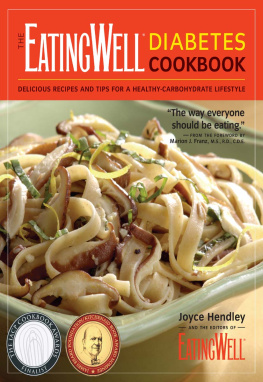
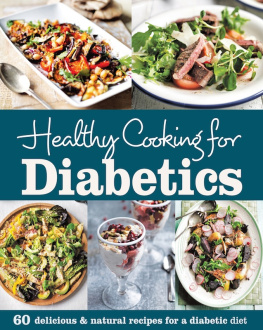

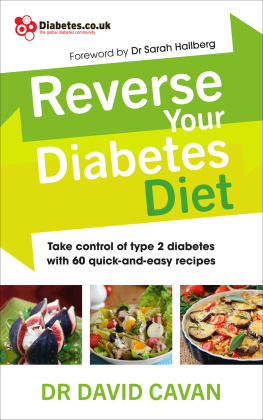

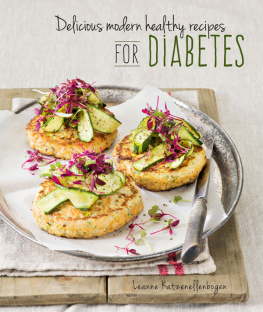


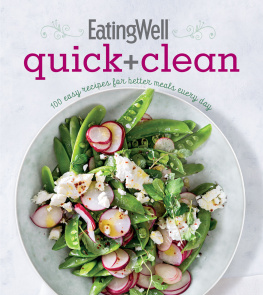

 THE COUNTRYMAN PRESS WOODSTOCK, VERMONT Dedicated to the memory of Elizabeth Hiser, M.S., R.D.,
THE COUNTRYMAN PRESS WOODSTOCK, VERMONT Dedicated to the memory of Elizabeth Hiser, M.S., R.D., This icon highlights quick & easy recipes that are ready to eat in 45 minutes or less. High
This icon highlights quick & easy recipes that are ready to eat in 45 minutes or less. High  Fiber This icon indicates that the recipe provides 5 grams or more of fiber per serving. As explained in Food Matters: Eating to Manage Diabetes, the carbohydrate count for such recipes can be reduced by the grams of fiber to yield the carbohydrate number that is used to determine Carbohydrate Servings.
Fiber This icon indicates that the recipe provides 5 grams or more of fiber per serving. As explained in Food Matters: Eating to Manage Diabetes, the carbohydrate count for such recipes can be reduced by the grams of fiber to yield the carbohydrate number that is used to determine Carbohydrate Servings. What is healthy eating for people with diabetes?
What is healthy eating for people with diabetes?